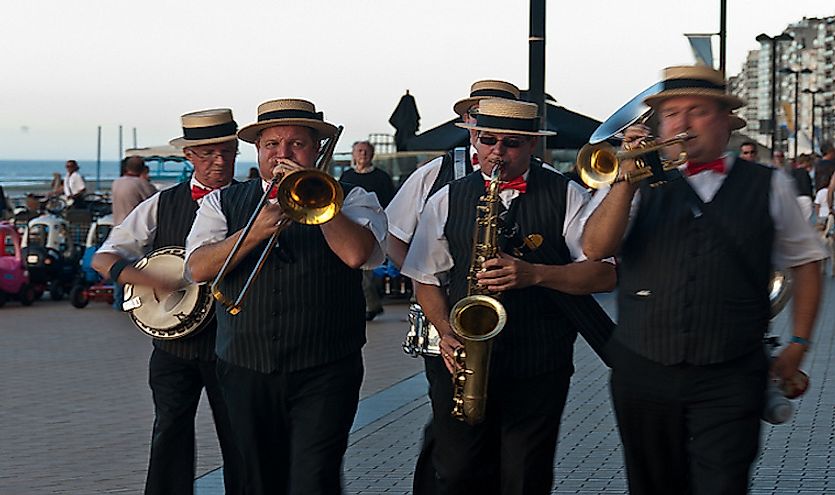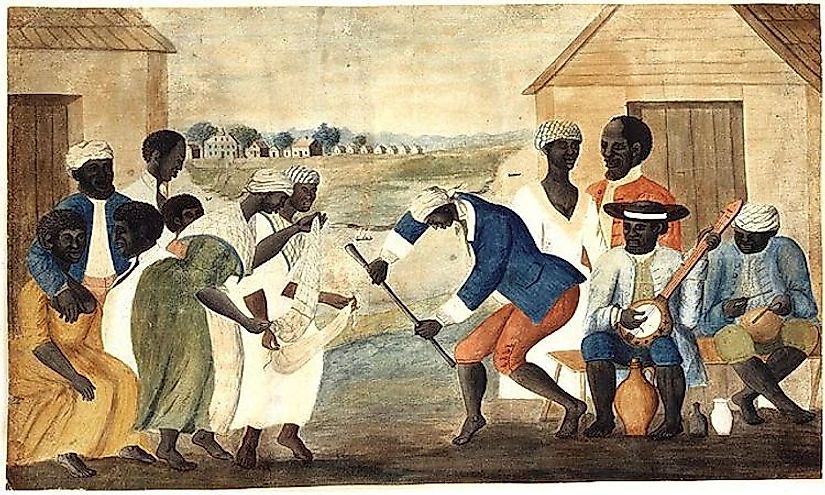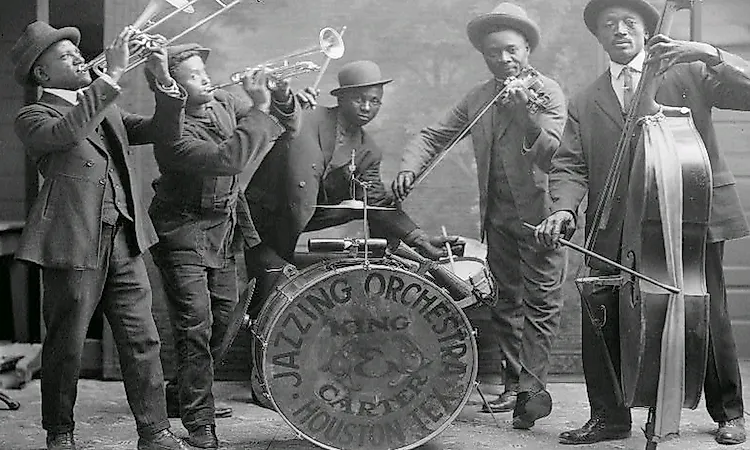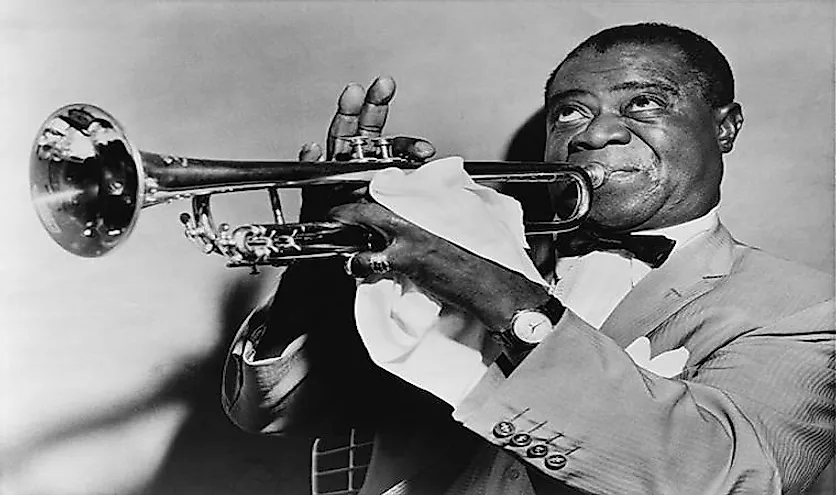Where Did Jazz Music Come From?

5. Stylistic Overview and Musical Characteristics

The style and characteristics of jazz music are very difficult to define because of the numerous sub-genres that have spawned out of jazz and the fact that improvisation is one of the key elements in jazz music. In jazz, improvisation gives musicians the freedom to express themselves as they can create their own interpretation of a predetermined tune. Improvisation lets jazz musicians have a musical conversation and helps to give each jazz musician their own personal and unique sound. Jazz music can be played on any instrument or using the human voice. The most common instruments for jazz music are the saxophone, trumpet, piano, trombone, bass, drums, and guitar. Most styles of jazz also try to keep some kind of a steady beat that can vary from having a very fast tempo to a very low tempo.
4. Origins of Jazz

The origins of jazz music date back to the second half of the 19th century to New Orleans. New Orleans was the only place in America that allowed slaves to own drums and slaves who had come from West Africa had a strong tradition of music that they wanted to keep alive. This ended up mixing over the years with church hymns that black slaves incorporated, along with Afro-Cuban rhythms and European classical music to become what is known as jazz. Following the abolition of slavery and the end of the American Civil War (1861-65), many African Americans found work in the entertainment industry as musicians. This eventually led to ragtime music appearing in the 1890s, with the most well-known of the ragtime musicians being Scott Joplin (c.1867/68-1917). Ragtime would be the immediate precursor to what would become jazz, as other bands and musicians tried to imitate the style by adding improvisation. New Orleans was the key to the creation of jazz since many early and notable jazz performers played throughout the city, especially from the red light district of Storyville. It was also at this time that George Vital Laine (1873-1966), also known as “the father of white jazz,” led an integrated marching band that produced a number of top jazz players in the city.
3. Spread and Development

The Jazz Age was a period in the 1920s when jazz truly took off, spreading and reaching its height. It was during this time that the music and dance styles associated with it became popular not only across the United States but also in Europe. Jazz became as synonymous a part of the "Roaring Twenties" as speakeasies, flappers, and prohibition. In 1918, right before the start of the Jazz Age, Paul Whiteman (1890-1967) and his orchestra became popular in San Francisco and in the years to come they toured America and Europe. Whiteman is one of the major figures to popularize jazz among white, middle-class Americans. Following Whiteman's success, a number of black jazz musicians like Duke Ellington (1899-1974) and Louis Armstrong (1901-71) saw success, jumping into jazz music now that it was mainstream. The 1930s saw the end of the Jazz Age and the rise of big swing bands, although people like Count Basie (1904-84) and the aforementioned Ellington helped to develop the big jazz band. Despite the dominance of jazz ending with the Great Depression, the music has continued to evolve with new styles and sub-genres forming as its influence on pop-culture continues to echo through time.
2. Notable Jazz Musicians, Past and Present -

This section will briefly touch on two of the most well-known of those jazz musicians, Bille Holliday and Louis Armstrong. Billie Holiday (1915-59) had a career as a singer and songwriter of jazz music that lasted almost thirty years. Her unique vocal style was inspired by jazz instruments, and she had a major influence in manipulating vocal tempo and phrasing, as well as on jazz and pop music. This unique vocal delivery and ability to improvise led to her becoming a mainstream star in the 1930s and most of the 1940s. Starting in the late 1940s, legal problems, drug abuse, and abusive relationships started to plague her, leading to a damaged reputation and lesser mainstream success. In 1959 Holiday died due to cirrhosis of the liver caused by her drug problems.
Louis Armstrong has a fifty-year career spanning from the 1920s through the 1960s as a jazz singer, composer, and trumpeter. Armstrong is probably the best-known jazz musician and helped to shift the focus of jazz to solo performances when he came on the scene in the 1920s. Over his career, Armstrong not only became known for his trumpet playing and voice but his impact as one of the first truly popular African-American entertainers. Armstrong died in 1971 suffering a heart attack in his sleep.
1. Cultural Significance and Artistic Legacy

In the decades following the end of the Jazz Era, the music continued to grow, change and redefine itself. The 1940s and 1950s witnessed the rise of bebop, Afro-Cuban jazz, hard jazz, west coast jazz, modal jazz and free jazz. Jazz in the 1960s and 1970s saw the rise of Latin jazz, Afro-Brazilian, post-bop, jazz fusion, jazz-rock and jazz-funk styles. In the 1980s, traditional jazz saw a reemergence alongside smooth jazz, acid jazz, nu jazz, jazz rap and punk jazz. Since the 1990s there has been no dominating style or styles of jazz, but a variety of styles that are currently being used by individuals and bands.











